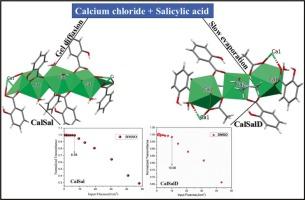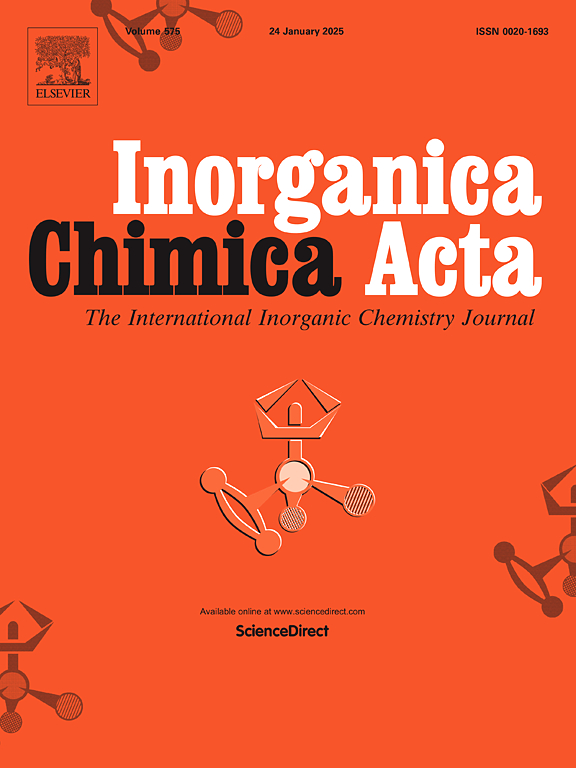合成方法对钙基配位聚合物晶体结构和三阶非线性光学性质的影响
IF 3.2
3区 化学
Q2 CHEMISTRY, INORGANIC & NUCLEAR
引用次数: 0
摘要
本文研究了由二水合氯化钙和水杨酸合成的配位聚合物的不同合成方法对其晶体结构和三阶非线性光学性能的影响。采用硅胶扩散法(CalSal)和慢蒸发法(CalSalD)制备了化合物的单晶。在这两种情况下,金属盐和配体溶液在最佳浓度为0.5 M时都获得了高质量的晶体。单晶x射线衍射显示,CalSalD具有一种新的晶体结构,而CalSal具有一种已知的结构。然而,这是第一次在凝胶介质中合成CalSal。利用红外光谱、热分析和紫外可见光谱对化合物进行了进一步表征。利用z扫描技术进行的三阶NLO研究表明,这两种化合物具有明显的非线性光学性质,强调了它们在光子和光电子领域的应用潜力。本文章由计算机程序翻译,如有差异,请以英文原文为准。

Influence of synthesis methods on the crystal structure and third-order nonlinear optical properties of calcium-based coordination polymers
This work investigates how different synthesis methods affect the crystal structure and third-order nonlinear optical (NLO) properties of coordination polymers formed from calcium chloride dihydrate and salicylic acid. Single crystals of the compounds were prepared using silica gel diffusion (CalSal) and slow evaporation (CalSalD) methods. In both cases, high-quality crystals were obtained at an optimal concentration of 0.5 M for both the metal salt and the ligand solutions. Single-crystal X-ray diffraction revealed that CalSalD possesses a novel crystal structure, while CalSal exhibits a previously known structure. However, this is the first report of CalSal being synthesised in a gel medium. The compounds were further characterised using FTIR spectroscopy, thermal analysis, and UV–visible spectroscopy. Third-order NLO studies using the Z-scan technique demonstrated distinct nonlinear optical properties for the two compounds, underscoring their potential in photonic and optoelectronic applications.
求助全文
通过发布文献求助,成功后即可免费获取论文全文。
去求助
来源期刊

Inorganica Chimica Acta
化学-无机化学与核化学
CiteScore
6.00
自引率
3.60%
发文量
440
审稿时长
35 days
期刊介绍:
Inorganica Chimica Acta is an established international forum for all aspects of advanced Inorganic Chemistry. Original papers of high scientific level and interest are published in the form of Articles and Reviews.
Topics covered include:
• chemistry of the main group elements and the d- and f-block metals, including the synthesis, characterization and reactivity of coordination, organometallic, biomimetic, supramolecular coordination compounds, including associated computational studies;
• synthesis, physico-chemical properties, applications of molecule-based nano-scaled clusters and nanomaterials designed using the principles of coordination chemistry, as well as coordination polymers (CPs), metal-organic frameworks (MOFs), metal-organic polyhedra (MPOs);
• reaction mechanisms and physico-chemical investigations computational studies of metalloenzymes and their models;
• applications of inorganic compounds, metallodrugs and molecule-based materials.
Papers composed primarily of structural reports will typically not be considered for publication.
 求助内容:
求助内容: 应助结果提醒方式:
应助结果提醒方式:


